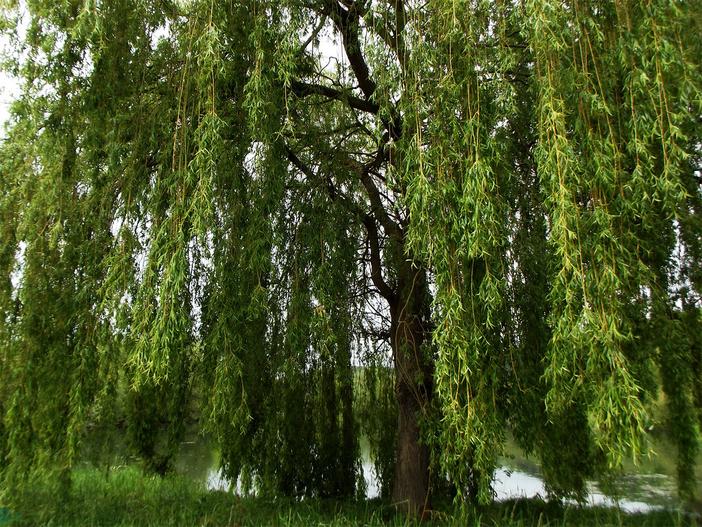Weeping Willow
(Salix babylonica)
Weeping Willow (Salix babylonica)
/
/

Barbara Auger
CC BY 2.0




































































































Estimated Native Range
Summary
The Weeping Willow is valued for its distinctive appearance and is often used as a focal point in landscape design, particularly near water features. It is also used for erosion control due to its extensive root system. However, this same root system can be problematic, as it can damage foundations and sewer lines. The tree prefers full sun to part shade and can tolerate a range of soil types, though it thrives in moist, well-drained soils. It requires ample water, especially when young. While it can be susceptible to diseases such as willow anthracnose and pests like aphids, proper care can mitigate these issues. Due to its invasive nature in some regions, it is important to consult local guidelines before planting.CC BY-SA 4.0
Plant Description
- Plant Type: Tree
- Height: 20-30 feet
- Width: 20-40 feet
- Growth Rate: Rapid
- Flower Color: N/A
- Flowering Season: Spring
- Leaf Retention: Deciduous
Growth Requirements
- Sun: Full Sun, Part Shade
- Water: Medium, High
- Drainage: Fast, Medium, Slow
Common Uses
Bee Garden, Bird Garden, Butterfly Garden, Deer Resistant, Erosion Control, Hummingbird Garden, Low Maintenance, Water Garden
Natural Habitat
Native to northern China’s dry areas near water sources, often found near rivers and lakes
Other Names
Common Names: Babylon Willow , Peking Willow , Treurwilger , Trauerweide , Trauer-Weide , Sauce De Babilonia , Sauce Llorón , Saule De Babylone , Saule Pleureur , Vrai Saule Pleureur
Scientific Names: Salix babylonica , Salix pseudolasiogyne , Salix pendula , Salix japonica , Salix dependens , Salix babylonica var. lavallei , Salix babylonica f. babylonica , Salix matsudana f. pendula , Salix babylonica f. seiko , Salix babylonica var. pekinensis
GBIF Accepted Name: Salix babylonica L.